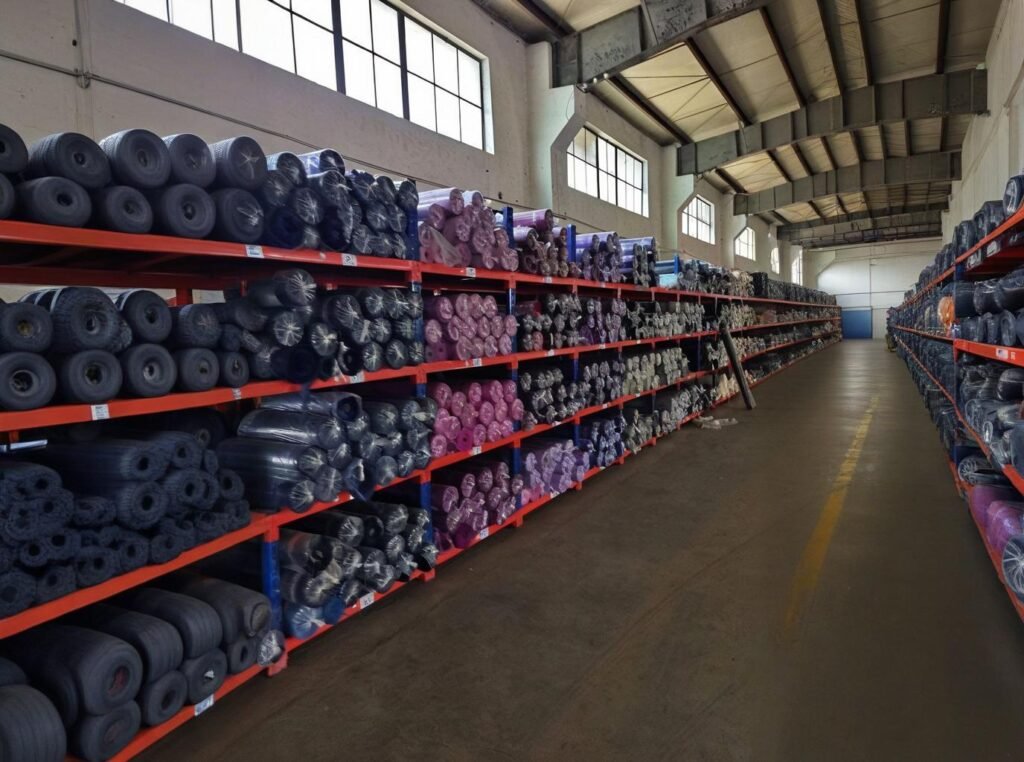
Uniforms aren’t just about dress codes—they are part of a hotel’s brand identity. The Oxford shirt, in particular, is a timeless staple for luxury hotel staff, thanks to its crisp structure, breathable fabric, and upscale aesthetic. But not all Oxford shirts are created equal. Behind every clean line and professional finish lies a technical combination of fabric weight, thread count, and weave structure—and getting it wrong can mean hot, stiff, or see-through shirts that frustrate both staff and guests.
The ideal Oxford shirt for luxury hotel uniforms is made with a midweight (120–160 gsm) fabric and a thread count between 40s and 80s, ensuring a perfect balance between breathability, opacity, and durability.
And this isn’t just about numbers—it’s about creating comfort and confidence on the job. Imagine the concierge in a humid coastal resort wearing a thick, non-breathable shirt. Now contrast that with the same concierge in a lightweight, wrinkle-resistant Oxford shirt that moves with their body. First impressions matter—fabric choices shape those impressions.
So how do top-tier hotels like Four Seasons, Ritz-Carlton, and Aman choose their staff uniforms? Let’s break down the fabric science behind every luxury Oxford shirt.
What Is Oxford Shirt Fabric and Why Is It Preferred for Hotel Uniforms?
Oxford fabric is a basket-weave cotton or cotton-blend textile known for its durability, wrinkle-resistance, and upscale appearance, making it ideal for hotel staff uniforms across departments.
Understanding Oxford Fabric in Hospitality
1. Structure & Aesthetic Appeal
- Oxford fabric uses a 2×1 or 2×2 basket weave, giving it a subtly textured surface that looks polished but not too stiff.
- The subtle sheen and soft structure provide a versatile appearance—formal enough for concierge and reception, relaxed enough for housekeeping or dining staff.
2. Performance in Real Use
| Property | Oxford Fabric Performance |
|---|---|
| Breathability | Moderate to high (depending on gsm/thread) |
| Wrinkle Resistance | High, especially with polyester blends |
| Moisture Wicking | Better than twill or poplin at same weight |
| Durability | Excellent due to tight basket weave |
| Ironing Requirement | Low with blended versions |
- Hotels often select Easy Care Oxford blends that can be machine-washed and worn straight from the dryer, reducing laundry processing time.
3. Why Luxury Hotels Prefer Oxford Over Other Weaves
| Fabric Type | Strength | Appearance | Maintenance | Ideal For |
|---|---|---|---|---|
| Oxford | High | Matte-sheen | Easy | Front desk, waitstaff |
| Poplin | Medium | Crisp | Wrinkles easily | Formal shirts |
| Twill | Medium | Diagonal texture | Heavy | Cool-weather uniforms |
- Oxford’s balance between formality and comfort makes it ideal for hot climates or year-round use.
Opt for “Royal Oxford” for premium applications—it has a finer weave and elegant drape, used by top luxury brands.
How Does Fabric Weight Impact the Comfort and Durability of Staff Shirts?
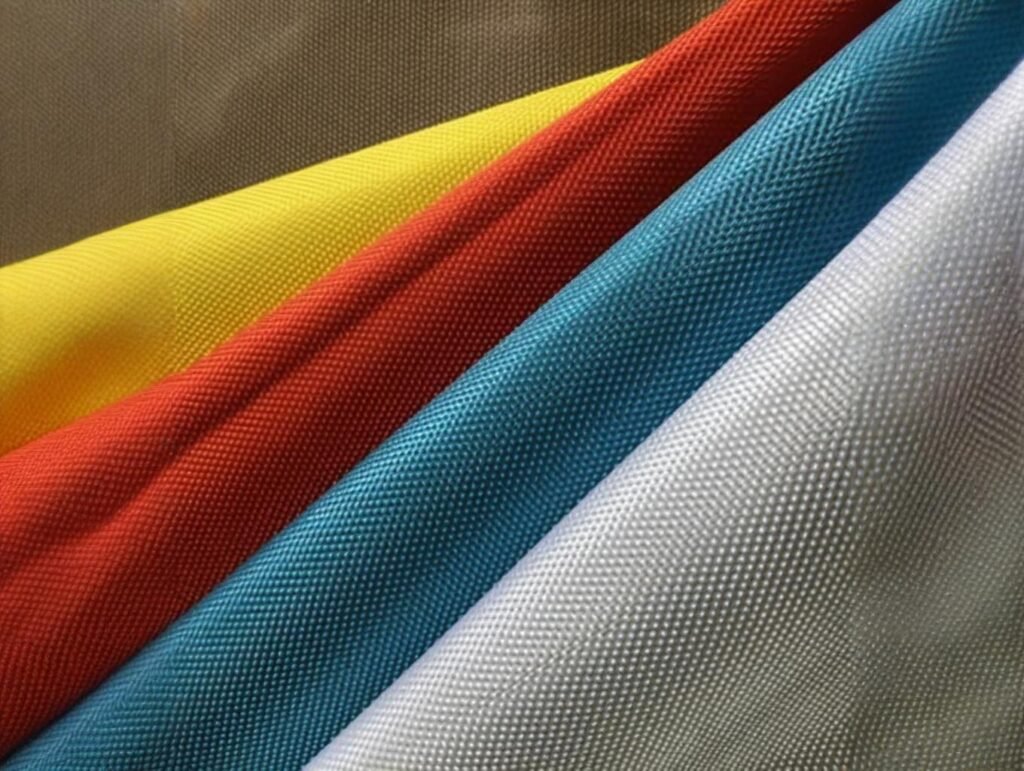
Fabric weight affects how Oxford shirts feel, breathe, and perform. Lightweight fabrics (90–120 gsm) are breathable but may lack opacity, while midweight (130–160 gsm) fabrics provide durability, structure, and comfort—ideal for luxury hotel staff.
Matching Fabric Weight to Hospitality Roles
1. Fabric Weight Categories for Oxford Shirts
| Weight (GSM) | Fabric Feel | Suitable Roles |
|---|---|---|
| 90–110 gsm | Light, airy | Housekeeping in hot climates |
| 120–135 gsm | Balanced feel | Concierge, banquet staff |
| 140–160 gsm | Structured & strong | Reception, management, bell staff |
| 160+ gsm | Heavy, warm | Winter uniforms, outdoor roles |
- Staff working in air-conditioned environments (e.g., reception desks) benefit from heavier shirts that hold their shape throughout the shift.
2. Common Issues with Improper Fabric Weight
| Issue | Cause | Solution |
|---|---|---|
| See-through shirts | Fabric too light (under 100 gsm) | Use midweight with tighter weave |
| Overheating | Fabric too heavy for tropical climates | Use lightweight cotton-poly blends |
| Rapid wear & tear | Thin yarns with low thread count | Upgrade to reinforced Oxford blends |
A luxury resort in Bali switched from 170 gsm shirts to a 130 gsm cotton-poly Oxford blend. Staff reported a 40% improvement in comfort and a 25% reduction in uniform turnover.
3. Regional Climate vs Fabric Weight Matrix
| Region | Recommended GSM | Fabric Suggestion |
|---|---|---|
| Southeast Asia | 100–120 gsm | Poly-cotton light Oxford |
| Middle East | 120–140 gsm | Moisture-wicking Oxford |
| Europe | 130–150 gsm | Pure cotton or blended Oxford |
| North America | 130–160 gsm | Heavy Oxford or brushed Oxford |
What Thread Count Is Ideal for Oxford Shirts in Luxury Hospitality Settings?
The ideal thread count for Oxford shirts used in luxury hotels ranges between 40s to 80s, balancing durability, breathability, and a smooth professional appearance.
While high thread count is often associated with softness in bedsheets, in shirts—especially Oxford—weaves—it’s about performance, not just softness.
Understanding Thread Count in Oxford Fabric
1. What Is Thread Count in Shirting?
Thread count refers to the number of threads per square inch of fabric, including both the vertical (warp) and horizontal (weft) yarns.
- For Oxford, the term is often expressed as “40s/2” or “80s single”, referring to yarn size and ply (single vs two-ply).
- Oxford shirts typically use coarser yarns than poplin or sateen to enhance durability.
2. Thread Count Guidelines for Hotel Staff Shirts
| Thread Count (Yarn Size) | Ply | Durability | Softness | Transparency | Application |
|---|---|---|---|---|---|
| 30s/2 | 2-ply | High | Low | Low | Housekeeping shirts |
| 40s/2 | 2-ply | High | Medium | Low | Front desk, restaurant staff |
| 60s/1 | Single | Medium | Soft | Medium | Spa, concierge uniforms |
| 80s/2 | 2-ply | High | High | Low | Executive-level uniforms |
In luxury hotel settings, 40s/2 or 60s/2 Oxford fabric strikes the perfect balance between professional feel and functional wearability.
3. Case Example: Boutique Hotel Transition
A boutique hotel in Dubai shifted from 100% cotton poplin (60s single) to a 40s/2 Oxford blend with 65% cotton / 35% polyester. Staff satisfaction scores improved due to better breathability, while the uniforms lasted 2x longer per washing cycle.
Which Oxford Weave Types Are Most Suitable for Hotel Staff Uniforms?
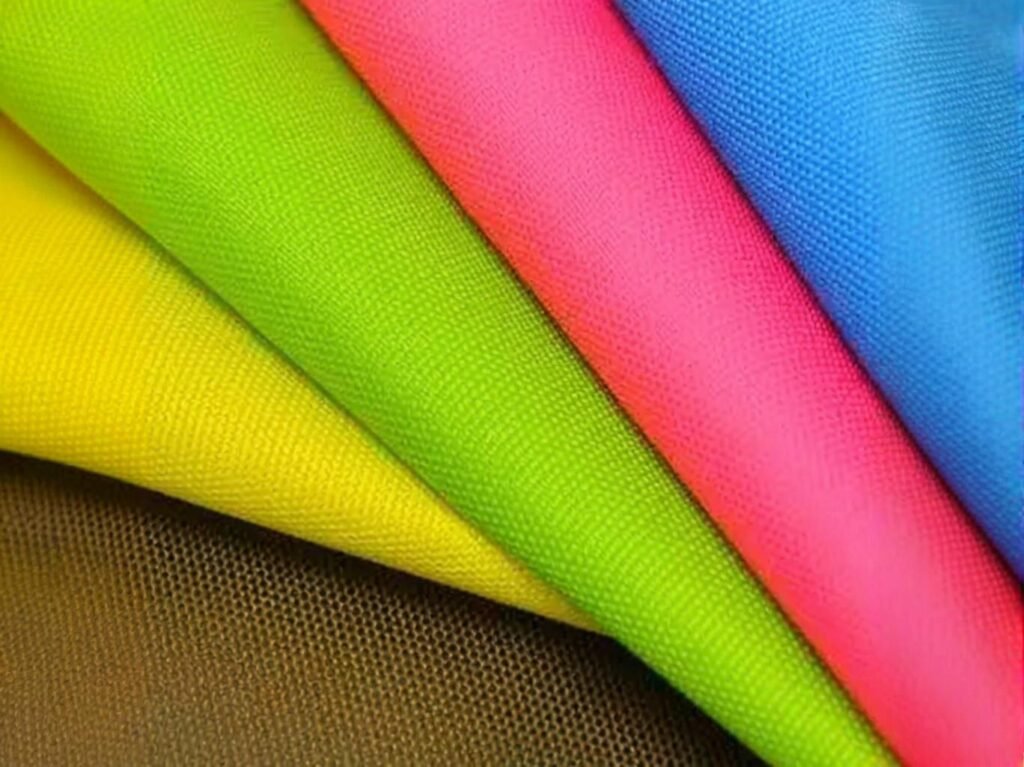
The two most common Oxford weaves for hotel uniforms are regular Oxford (basket weave) and pinpoint Oxford. Royal Oxford, while elegant, is better suited for VIP staff due to its delicate structure and sheen.
Weave Types and Their Hospitality Applications
1. Oxford Fabric Variants Overview
| Weave Type | Yarn Thickness | Texture | Sheen | Use Case |
|---|---|---|---|---|
| Oxford (standard) | Coarse | Textured | Low | General staff uniforms (durable) |
| Pinpoint Oxford | Finer yarns | Smoother | Light | Supervisors, service captains |
| Royal Oxford | Very fine yarn | Satin-like | High | Front desk, luxury concierge, VIP floors |
2. Visual Texture & Branding Impression
- Standard Oxford gives a casual-yet-professional vibe—ideal for approachable hotel settings or casual resorts.
- Pinpoint Oxford offers a sleeker finish while retaining strength.
- Royal Oxford suits upscale city hotels where uniforms double as fashion statements.
3. Maintenance Comparison Across Weaves
| Weave Type | Ironing Needed | Shrinkage Risk | Color Retention | Machine-Wash Friendliness |
|---|---|---|---|---|
| Standard Oxford | Low | Minimal | High | Very Good |
| Pinpoint Oxford | Medium | Medium | Medium | Good |
| Royal Oxford | High | High | Medium | Fair |
For hotel chains with high staff turnover or frequent uniform laundering, standard Oxford or poly-cotton pinpoint Oxford is the best long-term choice.
Do Higher Thread Counts Always Mean Better Shirt Quality for Hotel Use?
No—higher thread count doesn’t always guarantee better shirt quality in hospitality uniforms. Instead, quality depends on yarn ply, weave density, and finishing techniques, which all play a larger role in shirt durability and performance.
In fact, excessively high thread counts (above 100s) may lead to fragile fabrics, more prone to wrinkling and pilling—especially under industrial laundry cycles.
Unpacking the Thread Count Myth
1. Marketing vs Functionality in Thread Count
Many brands market 100s or 120s count shirts as “premium,” but in hospitality environments, this often results in:
- Reduced fabric longevity
- Transparency issues
- Higher ironing requirements
2. Key Quality Metrics Beyond Thread Count
| Metric | Why It Matters |
|---|---|
| Yarn Ply (1-ply vs 2-ply) | 2-ply adds strength and structure |
| Staple Fiber Length | Long-staple cotton reduces pilling and increases softness |
| Finishing Treatment | Wrinkle resistance, anti-microbial, colorfastness |
| Weave Tightness | Impacts opacity and airflow |
3. Recommended Combinations for Hotel Staff
| Fabric Structure | Suggested Use Case |
|---|---|
| 40s/2 Oxford Cotton Blend | Housekeeping, Banquet Staff |
| 60s/2 Pinpoint Oxford | Front Desk, Spa, Valet Staff |
| 80s/2 Royal Oxford | VIP Guest Liaisons, Management Floors |
Thread count is just one part of the shirt’s DNA. True quality comes from how well the fibers, weave, and finish work together in real-use conditions.
How Should You Choose Between Lightweight, Midweight, and Heavyweight Oxford Shirts?
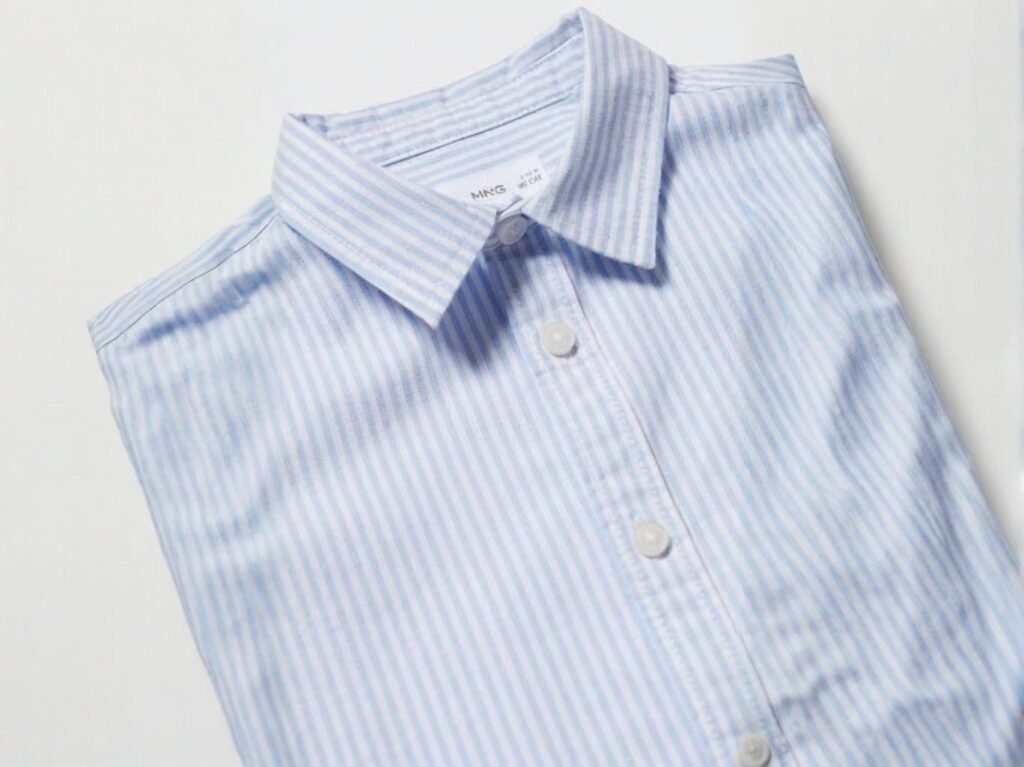
The best Oxford fabric weight for hotel staff depends on climate, role, and movement needs. Lightweight shirts are breathable for hot areas, midweight offers balance for most roles, and heavyweight shirts are ideal for structure or cooler temperatures.
Matching Weight to Role and Region
1. Oxford Shirt Weight Comparison Table
| Weight Category | GSM Range | Characteristics | Hospitality Role Examples |
|---|---|---|---|
| Lightweight | 90–120 | Airy, quick-drying, slightly sheer | Housekeeping, Resort Staff (Tropics) |
| Midweight | 125–160 | Balanced drape, opacity, comfort | Reception, Dining, Valet Staff |
| Heavyweight | 165–200+ | Structured, warm, more formal | Managers, Doormen, Cooler Climates |
2. What Happens When You Pick the Wrong Weight?
- Too light: Shirts may appear see-through under lobby lighting.
- Too heavy: Leads to heat stress in warm environments or active roles.
- Too stiff: Restricts movement, causes discomfort during long shifts.
3. Regional Use Case Scenarios
| Region | Suggested GSM | Common Staff Feedback |
|---|---|---|
| Thailand | 100–120 gsm | “Feels cool, dries fast” |
| Dubai | 120–135 gsm | “Balance between airflow and coverage” |
| Germany | 140–160 gsm | “Good for layering in winter” |
| Canada | 160–180 gsm | “Feels warm but not bulky” |
4. Best Practices When Choosing Fabric Weight
- Request fabric swatches before placing orders.
- Match shirt weight to staff activity level (reception vs bell service).
- Choose blends (cotton-poly or cotton-spandex) for added comfort and recovery.
For international hotel chains, it’s smart to standardize visual design while localizing fabric weights by region.
What Fabric Blends (Cotton, Polyester, Spandex) Work Best for Hotel Staff Shirts?
The best fabric blends for hotel Oxford shirts balance breathability, wrinkle resistance, and durability. A common and effective blend is 60% cotton and 40% polyester, offering comfort with low maintenance, while spandex (2–3%) adds stretch for active roles.
In luxury hospitality, staff comfort and presentability must align with high performance during long shifts. Pure cotton is breathable but wrinkles easily and may shrink. Polyester adds durability and reduces maintenance needs. A small amount of spandex provides stretch, perfect for dynamic roles like housekeeping or bell service.
Fabric Blend Comparison for Hotel Uniforms
1. Common Oxford Shirt Blends
| Blend Composition | Comfort | Wrinkle Resistance | Durability | Best For |
|---|---|---|---|---|
| 100% Cotton | High | Low | Medium | VIP staff, spa, management |
| 60% Cotton / 40% Poly | Medium | High | High | Front desk, restaurant, banquet |
| 80% Cotton / 20% Poly | High | Medium | High | Concierge, supervisor roles |
| 60% Cotton / 38% Poly / 2% Spandex | Very High | High | High | Bellboys, housekeeping, valet |
Hotels with frequent laundering and daily uniform wear benefit most from cotton-poly blends. Add spandex for flexibility if the staff performs physical tasks.
2. Case in Point: International Resort Chain
A five-star resort group operating in Southeast Asia shifted from 100% cotton to a 60/38/2 cotton-poly-spandex Oxford blend. They reported:
- 30% longer shirt life cycle
- 50% fewer ironing complaints
- Enhanced staff mobility during long shifts
3. Eco-Friendly Options
With growing sustainability expectations, many hotel buyers now explore:
- Recycled polyester blends
- Organic cotton-rich fabrics
- TENCEL™ blends for soft, breathable finish
How Can You Source Custom Oxford Shirts with the Right Fabric Specs and MOQ?
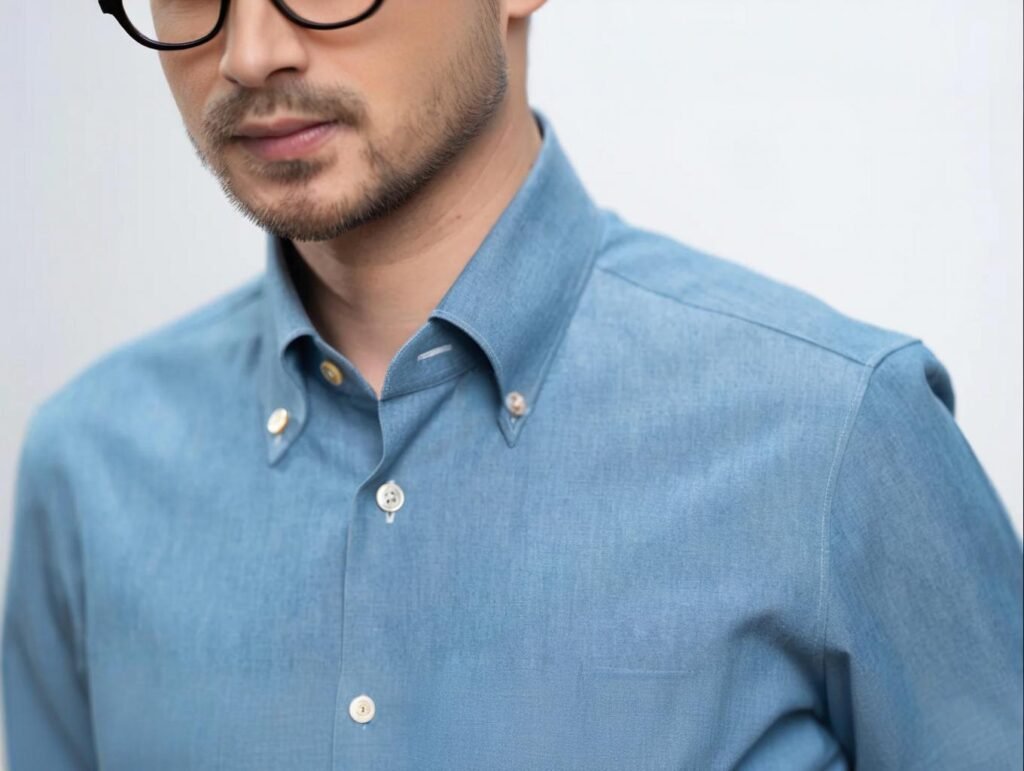
To source custom Oxford shirts for luxury hotels, work with an experienced textile manufacturer who offers fabric customization, low MOQs, fast prototyping, and compliance with industry standards.
Sourcing quality hotel staff shirts isn’t just about buying garments—it’s about creating uniforms that reflect your brand, survive industrial washing, and make your staff feel great. That means partnering with the right supplier.
Strategic B2B Sourcing Tips
1. Checklist Before You Order
| Requirement | Why It Matters |
|---|---|
| Fabric weight (GSM) | Ensures comfort and durability |
| Thread count and ply | Affects feel and opacity |
| Shirt cut and sizing options | Supports global staff body types |
| Logo embroidery or printing | Enhances brand presence |
| Colorfastness and shrinkage control | Maintains consistency post-wash |
2. Questions to Ask Your Shirt Supplier
- Can you customize fabric blends and GSM?
- What is your minimum order quantity (MOQ)?
- Do you offer free sampling?
- Are your fabrics OEKO-TEX or GOTS certified?
- How fast can you deliver a prototype?
3. Why Choose SzoneierFabrics?
SzoneierFabrics is a professional textile manufacturer in China with years of experience in producing custom fabric solutions for hospitality clients worldwide. We provide:
- ✔️ Fabric weight and weave customization
- ✔️ Free samples and design support
- ✔️ Fast sampling and low MOQs
- ✔️ 100% quality control and reliable global shipping
Whether you run a boutique resort or an international luxury hotel group, we help you develop shirts that match your brand’s prestige—down to every thread.
Ready to Upgrade Your Hotel Staff Uniforms?
Work with SzoneierFabrics to develop Oxford shirts that feel as premium as your service. Request free samples, custom fabric specs, and a quote tailored to your brand’s vision.

